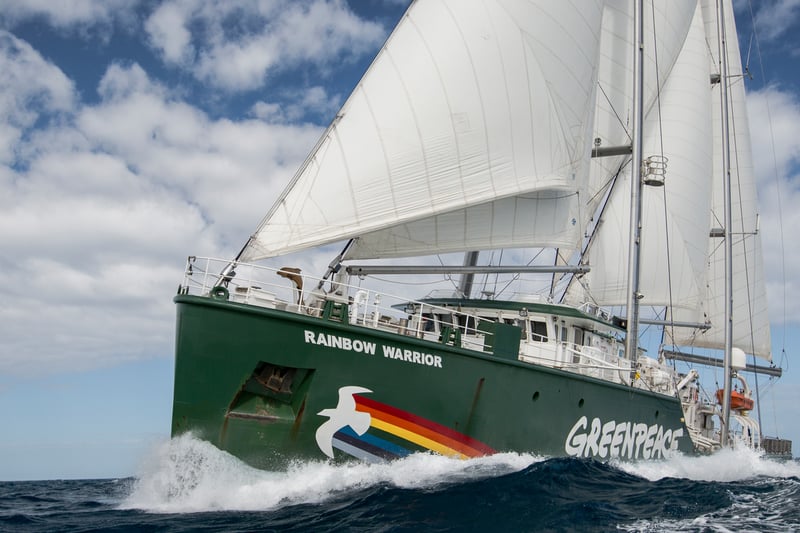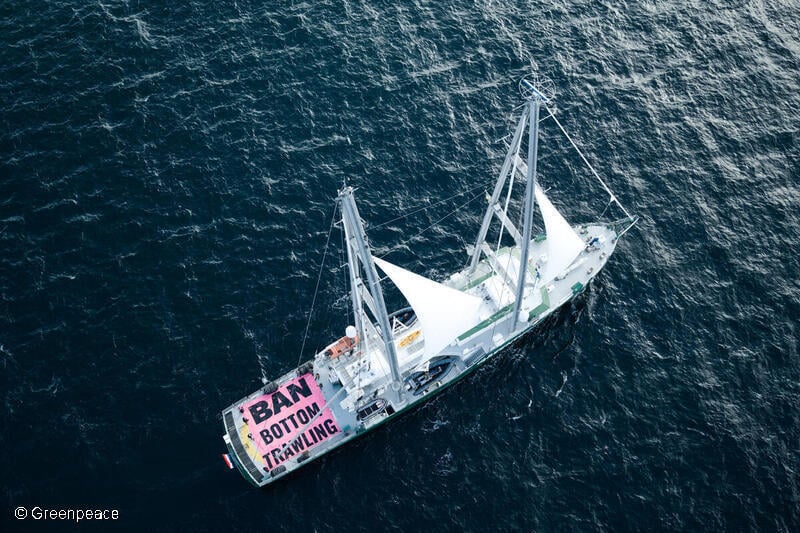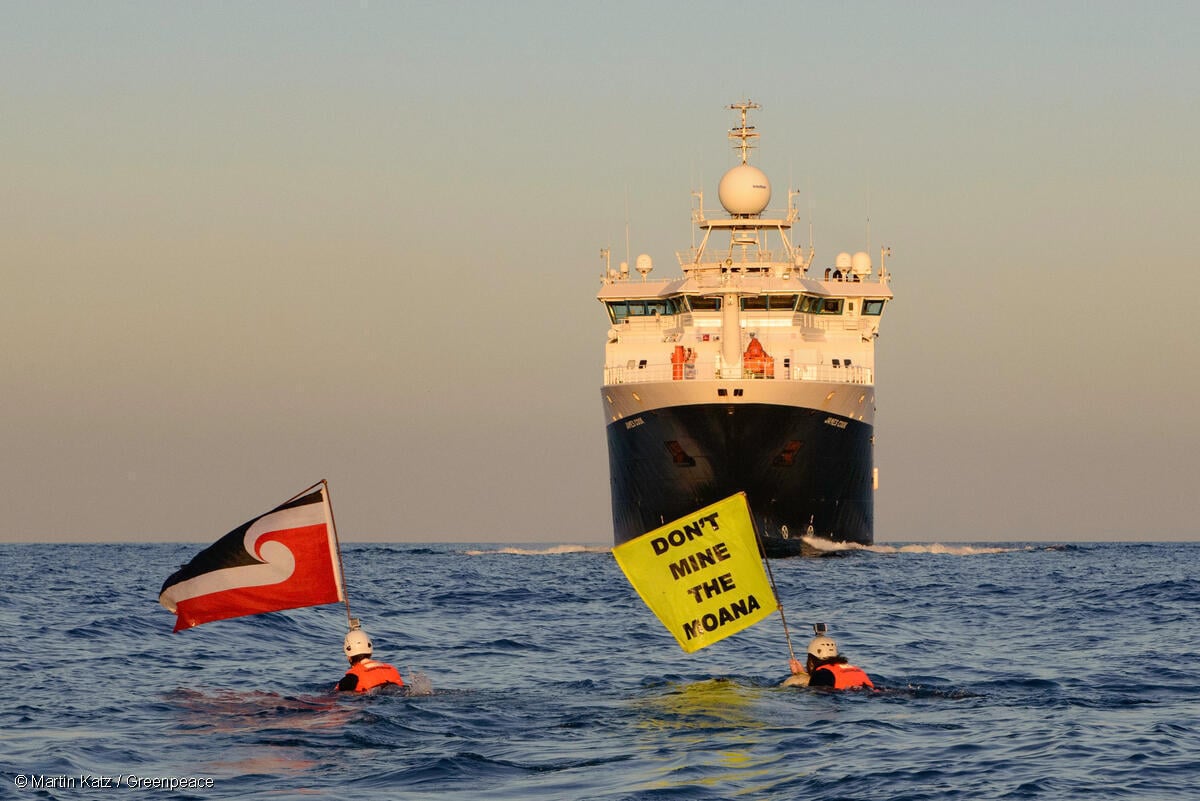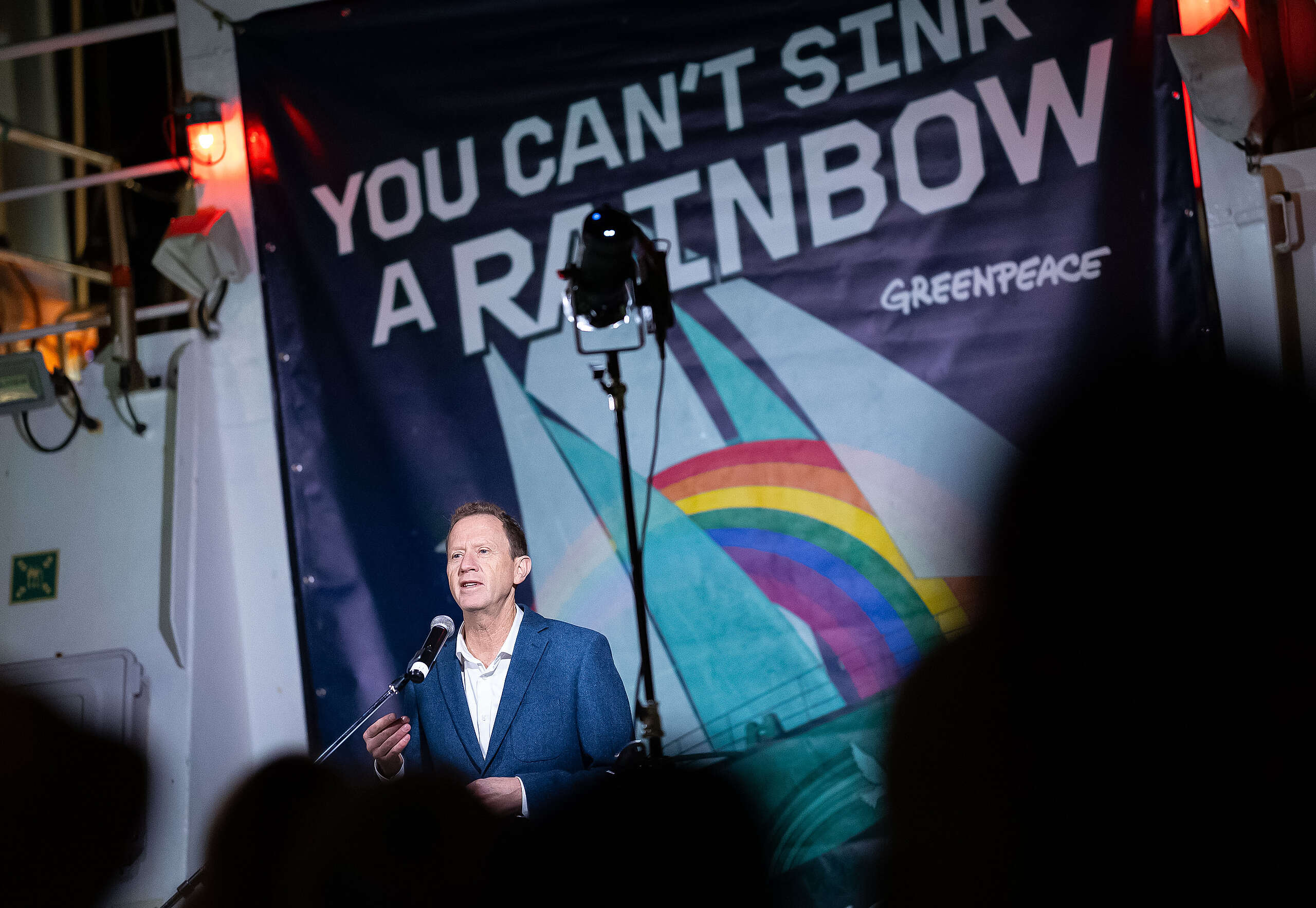Following its action at sea rebranding bottom trawlers, the Greenpeace flagship, Rainbow Warrior, is in Auckland on a rare visit to Aotearoa New Zealand. When it first arrived a few weeks ago, you could see the smiles of recognition and pride as it lay anchored at port.
That’s not surprising, given the close ties the people of Aotearoa feel with the iconic ship.
The new Rainbow Warrior is here to commemorate the bombing of the original ship 40 years ago on 10 July 1985. Speak to any New Zealander who was around then, and they’ll tell you where they were when they heard the news of the two bomb blasts which sank the ship and killed Greenpeace photographer Fernando Pereira.

The bombing took place at the height of the Greenpeace campaign to stop French nuclear testing in the Pacific. It was intended to intimidate and silence Greenpeace and the wider movement because together we were posing a very real threat to the military programme of nuclear weapons testing.
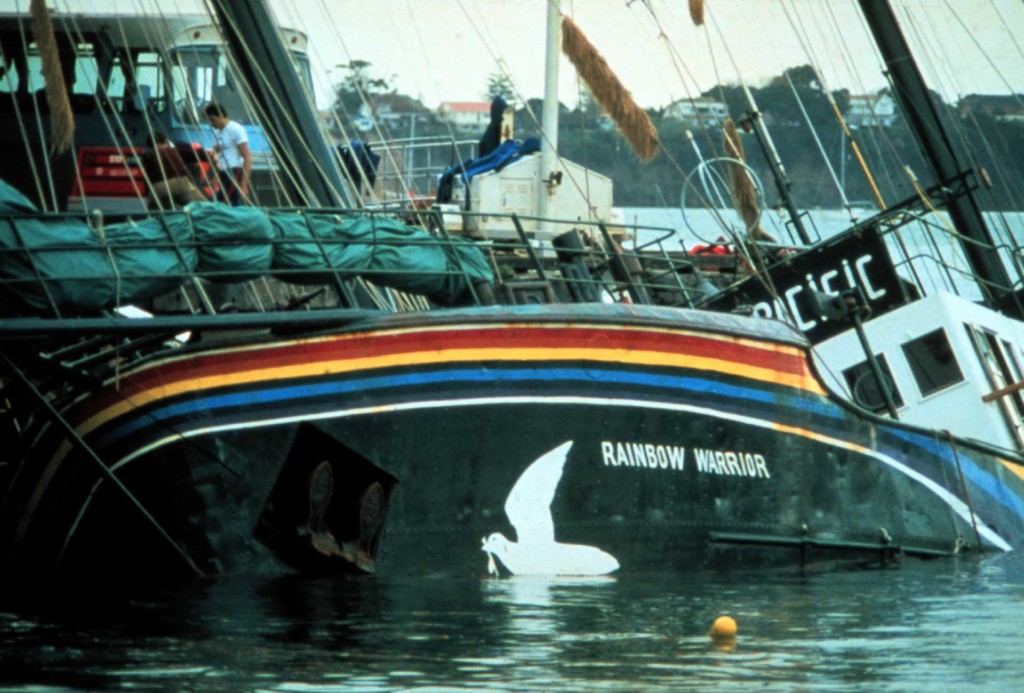
But their plan backfired. Greenpeace only grew stronger, the attack galvanised a nation and the nuclear-free Pacific campaign. We showed that you can’t sink a rainbow, and you can’t silence a movement.
Now, 40 years on, it is the oil industry trying to silence us. This time, not with bombs, but with overwhelming legal attacks. They too are trying to intimidate us because we are a threat to them and big polluters everywhere. But just like 40 years ago, we will not be silenced now. We will not be intimidated, and we will not back down.
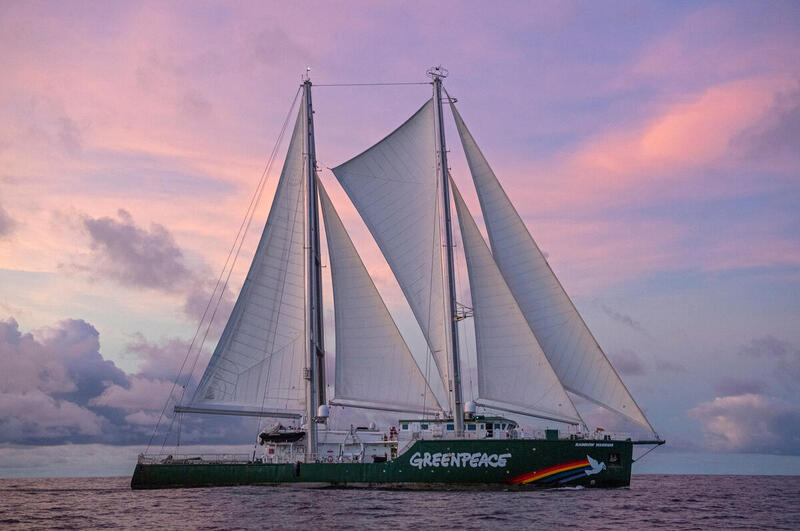
The Rainbow Warrior has stood at the frontline of Greenpeace’s global fight for a green and peaceful future. It has helped end nuclear testing, blocked coal shipments, stopped destructive fishing, and challenged oil giants, sailing as a fearless symbol of resistance and hope.
The Rainbow Warrior’s return to Aotearoa comes now at a pivotal moment in the fight to protect the planet’s fragile life-support systems.
Here in Aotearoa, the Luxon Government is waging an all-out war on nature just as climate change, ecosystem collapse, and accelerating species extinction globally pose an existential threat.
Greenpeace is on the front line of that fight globally and here in the South Pacific.
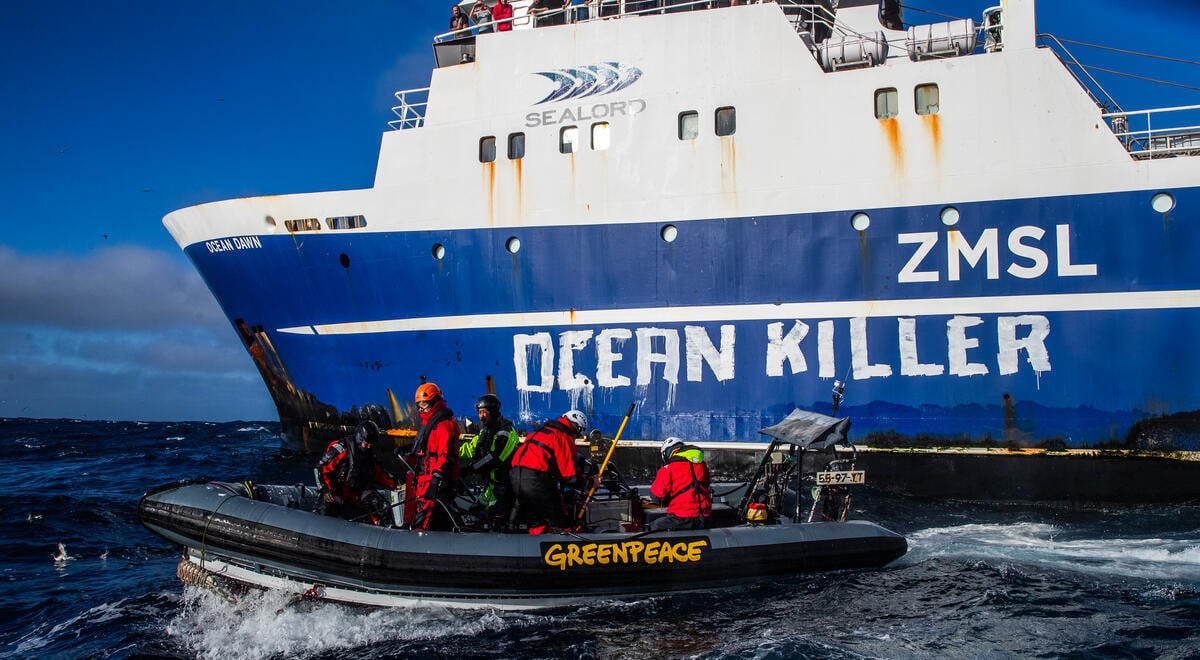 © Paul Hilton / Greenpeace
© Paul Hilton / GreenpeaceOne of our key fights today is to protect the oceans against bottom trawling, a highly destructive fishing method that drags massive, weighted nets across the seafloor, destroying everything in their path. Coral communities that take centuries to grow are reduced to rubble in minutes. The Rainbow Warrior is right now in the South Pacific confronting bottom trawlers and documenting the destruction.
New Zealand is now the only country still bottom trawling the South Pacific high seas. In 2023 alone, more than 200 tonnes of coral were hauled up by New Zealand’s trawl fleet – and that’s only what came up in the nets.
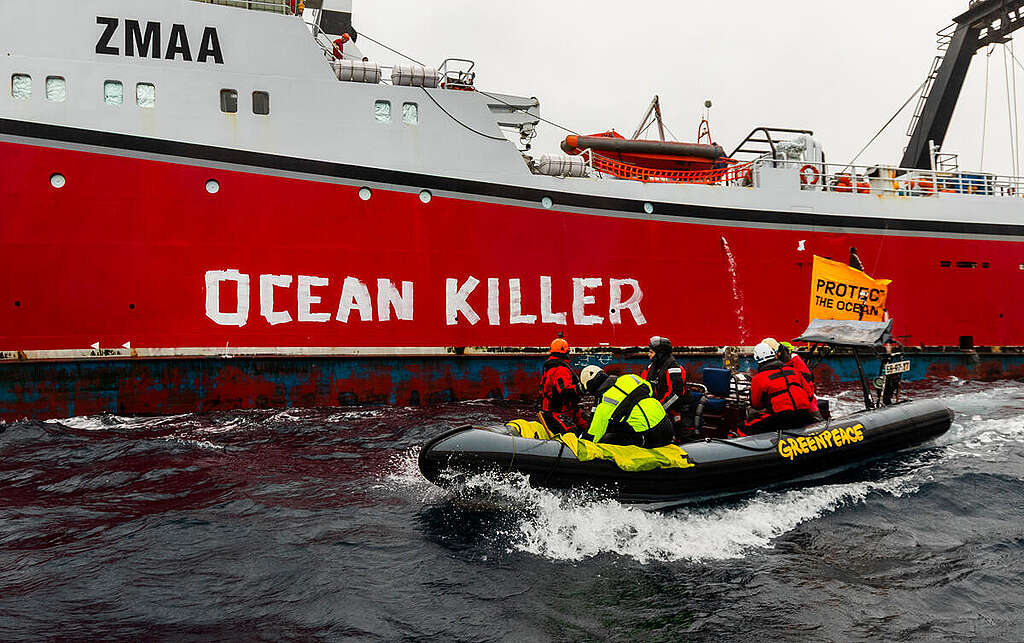
At dawn on 10 July we’ll host a special ceremony to mark the day of the bombing at Halsey Wharf, and we’ll be livestreaming the event over on our YouTube channel.
On the afternoon of 10 July, we’ll host a livestream ‘virtual tour’ of the modern-day Rainbow Warrior.
You can take that tour in person on our public open boats weekends on the 12/ 13 July and 19/ 20 July. Explore the ship, meet the crew and campaigners, and hear incredible stories from recent voyages, with a peek behind the scenes of life on board.
Don’t miss this rare chance to walk the decks of the Rainbow Warrior. Get on board and be part of the next chapter in the story of a ship that became a legend.
We’ll have campaign stalls, info boards, kids activities and friendly crew to chat with on the quayside too.
We’re looking forward to seeing you!
Tours will run continuously throughout the day until 4pm. The last tour of the day will start at 3:30pm, or 1:30 on Sunday, 20 July.
Dates and times:![]() Saturday 12 July: 10am – 4pm
Saturday 12 July: 10am – 4pm![]() Sunday 13 July: 10am – 4pm
Sunday 13 July: 10am – 4pm![]() Saturday 19 July: 10am – 4pm
Saturday 19 July: 10am – 4pm![]() Sunday 20 July: 10am – 2pm
Sunday 20 July: 10am – 2pm

